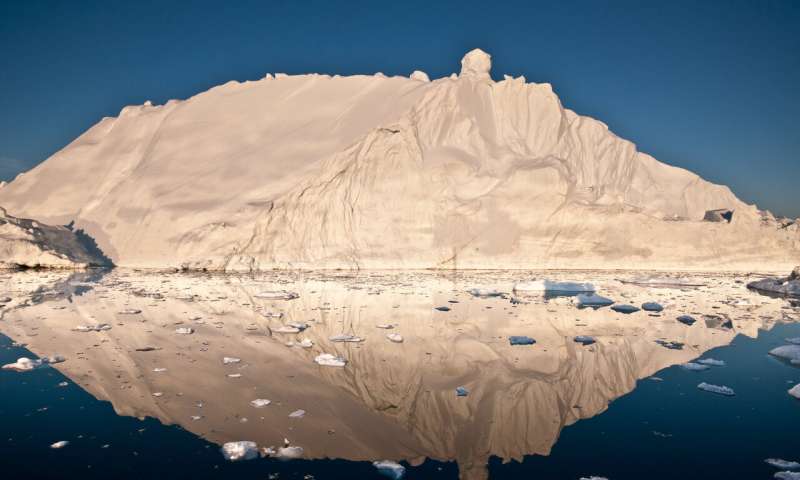SOURCE: Phys.org
DATE: December 10, 2019
SNIP: Greenland is losing ice seven times faster than in the 1990s and is tracking the Intergovernmental Panel on Climate Change’s high-end climate warming scenario, which would see 400 million more people exposed to coastal flooding by 2100.
A team of 96 polar scientists from 50 international organisations have produced the most complete picture of Greenland ice loss to date. The Ice Sheet Mass Balance Inter-comparison Exercise (IMBIE) Team combined 26 separate surveys to compute changes in the mass of Greenland’s ice sheet between 1992 and 2018. Altogether, data from 11 different satellite missions were used, including measurements of the ice sheet’s changing volume, flow and gravity.
The findings, published today in Nature today, show that Greenland has lost 3.8 trillion tonnes of ice since 1992—enough to push global sea levels up by 10.6 millimetres. The rate of ice loss has risen from 33 billion tonnes per year in the 1990s to 254 billion tonnes per year in the last decade—a seven-fold increase within three decades.
The assessment, led by Professor Andrew Shepherd at the University of Leeds and Dr. Erik Ivins at NASA’s Jet Propulsion Laboratory in California, was supported by the European Space Agency (ESA) and the US National Aeronautics and Space Administration (NASA).
Professor Shepherd said: “As a rule of thumb, for every centimetre rise in global sea level another six million people are exposed to coastal flooding around the planet.”
“On current trends, Greenland ice melting will cause 100 million people to be flooded each year by the end of the century, so 400 million in total due to all sea level rise.”
“These are not unlikely events or small impacts; they are happening and will be devastating for coastal communities.”

